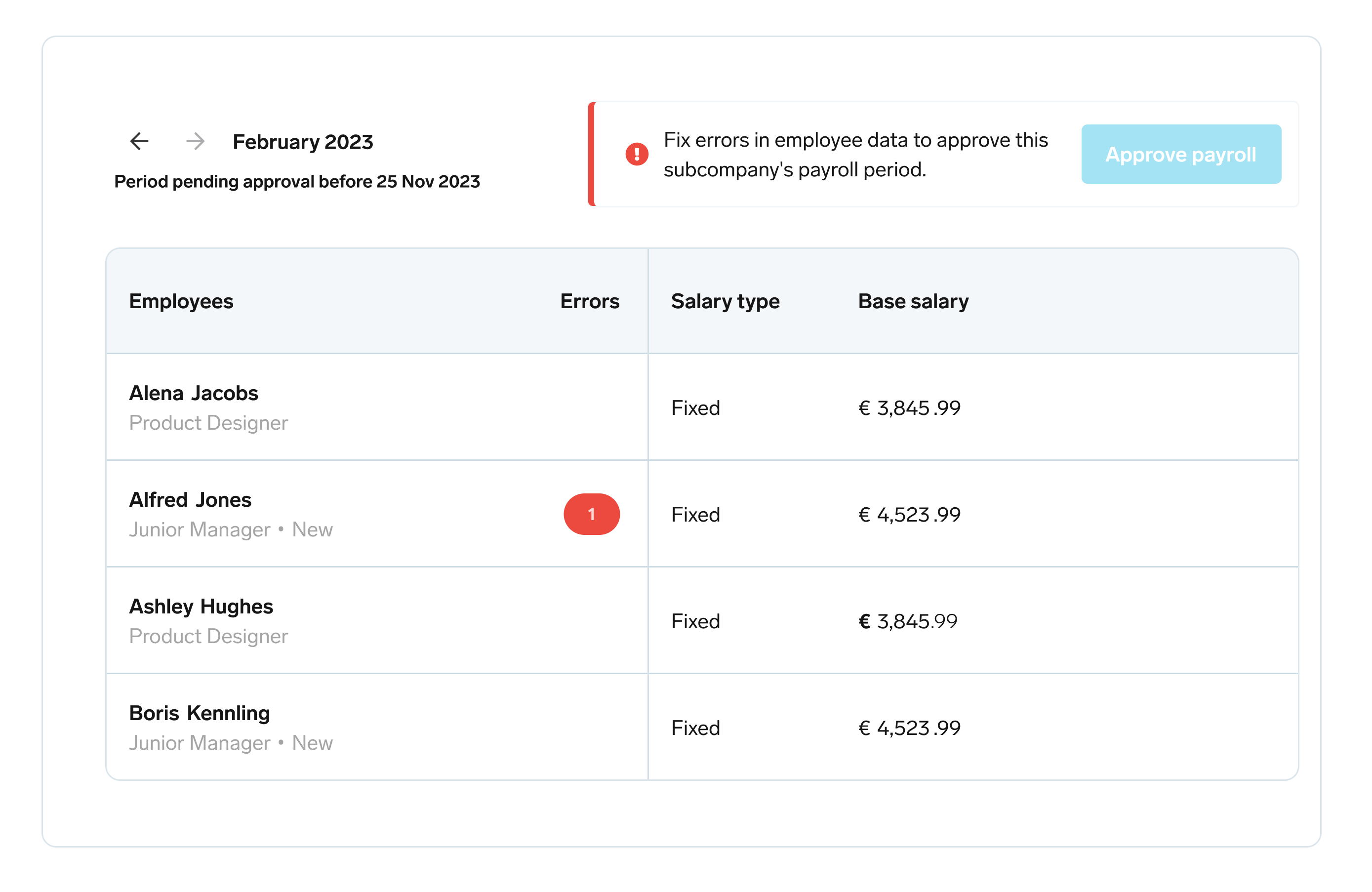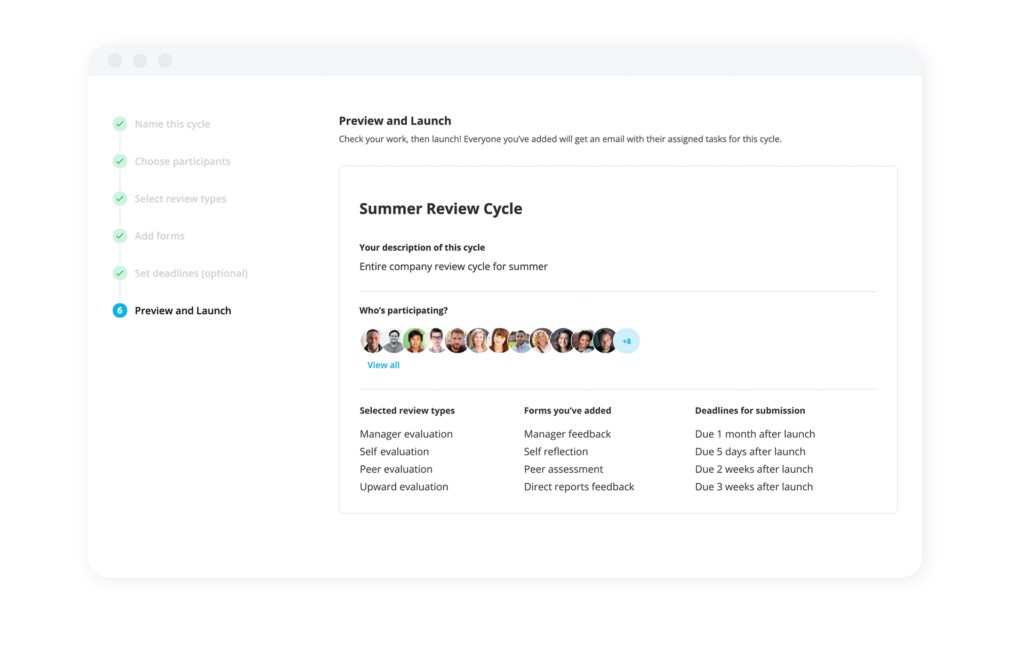
Integrate payroll with HR management
Integrate payroll processes seamlessly with Personio's comprehensive HR management platform.
Explore our productThe Impact of Performance-Related Pay on Employees

What is the impact that performance-related pay can have on employee work? Below, you’ll find how performance-based compensation is measured, an overview of the various models and how to set up this pay system for your organisation.
Key Facts
There are several types of performance-related pay (PRP) schemes that can determine how performance is measured and how it affects an employee's wage.
PRP can motivate employees to perform at their best but risks discouraging struggling workers.
When implementing PRP, you should train managers as early as possible to remain objective while measuring someone’s performance.
Contents
- 1What is Performance-Related Pay?
- 2Types of Performance-Related Pay
- 3The Three Main Objectives of Performance-Related Pay
- 4How To Measure Performance and Compensation
- 5Setting Up a Performance-Related Pay Scheme
- 6Advantages and Disadvantages of PRP
- 7Frequently Asked Questions About Performance-Related Pay
- 8Ensure Equitable Performance Reviews
What is Performance-Related Pay?
Performance-related pay, often abbreviated as PRP, is any form of compensation partly or wholly influenced by employee performance. While it’s typically linked to individual output, it can also be linked to team success and company performance as a whole.
You’ll often find performance-related pay in the sales industry, where workers receive a base salary and commission, on-target incentives or various bonuses based on performance.
Start simplifying your payroll management

Learn how to streamline your payroll process to save time and ensure accuracy.
Read our guideTypes of Performance-Related Pay
While there’s a clear definition for performance-based compensation, you can also further break down that umbrella term into several types. Those types include:
Piecework. Your organisation pays out a certain amount of money for each product your employee creates. Piecework is seen most often in the textile and engineering industries.
Plant-wide or organisational incentives. This form is a collective version of piecework where the collective output of a team or workplace is used as the basis for everyone’s pay. The more the group produces, the higher their ending salaries will be.
Appraisal-related pay. This system assesses an employee’s performance compared to previously established company goals. Usually used as part of a performance management system, the most common example is a bonus earned on top of an employee’s usual salary due to exceeding a quota.
Merit pay. Somewhat similar to appraisal-related pay systems, merit pay is differentiated by being less structured than its cousin. Here, employees are rewarded for outstanding performance within their roles rather than because they overcame a preset goal.
Payment by results. In this pay scheme, bonuses are earned on top of an employee’s typical salary based on an independent appraisal of results. For example, after a worker completes a project, the additional wage is determined by the client’s or employer’s verification that the employee completed the work.
Competency-based compensation. Rather than getting paid for results, companies link their employee’s training to their salaries, paying them more as they gain new competencies. Typically, these skills, such as leadership, customer service and decision-making, can be applied broadly across the company.
Profit-related compensation. This payment scheme encourages employees to focus on achieving the organisation's goals by making their bonuses dependent on the company's success. The more your company earns, the more your workers are rewarded.
The Three Main Objectives of Performance-Related Pay
The main objectives of PRP can help further your company’s success by creating a more engaged workforce. Here they are in no particular order:
1. Increasing Performance Levels
One of the benefits of performance-based compensation is the way it can motivate employees. While wages are obviously a main motivator for many of your employees, connecting it to performance can greatly increase their engagement with responsibilities and overall company goals.
Connecting performance and achievements to wages has been shown to increase performance, but it’s recommended to do so carefully as it can also cause stress in your workforce when not executed properly.
2. Promoting an Entrepreneurial Culture
Implementing PRP in the right way can motivate workers to be more independent in the roles and responsibilities they pursue.
When a company makes it clear which actions it will reward, employees will aim to perform those actions and find innovative ways to accomplish company goals.
3. Maintaining Fairness in Compensation
The more an employee produces or the higher the quality of the product, the more they get paid. Your workforce will appreciate their efforts being rewarded, and this system’s fairness can encourage employees to consistently perform at their best.
Give Potential Room To Grow With Personio

Automate your performance cycles to open up time for job enrichment with Personio today.
Find Out More
How To Measure Performance and Compensation
Measuring performance for the purpose of compensation begins with setting standards and goals against which employees are measured.
These goals can be anything: they can involve objective measures such as selling more products or exceeding performance goals or include more subjective measures.
Most employers use assessment scales to rate their employee’s performance, with most giving options from very unsatisfied to superior. There are also formulas that can link pay to performance more objectively.
If you’re not sure which is best for your company, a blend between subjective and objective measures is generally best. Subjective measurements alone tend to be prone to bias. Objective measurements keep things fair but may raise resentment among senior employees who feel they should be paid more than the scale suggests.
Setting Up a Performance-Related Pay Scheme
Implementing a successful PRP scheme requires careful planning to accurately match performance to payment. Below are some key issues to consider while setting things up….
Involve Managers Early On
Your managers will be the key to a successful implementation of PRP because they’re the ones judging performance. In general, Line managers need to be able to appraise their employees objectively. Any perceived favouritism on your company’s part could lead to a less cooperative work environment.
Plan Thoroughly
Implementing a performance-based compensation scheme heavily depends on your company’s culture. A generic structure can work, but setting it up without understanding your employees and their expectations can lead to unintended behavioural changes in your workforce. The preferred model fits your business and treats your workers equally, establishing clear guidelines that keep the policy as fair and transparent as possible.
Identify Pitfalls and Needs
Even when you believe you’ve found the right style of PRP, it’s important to review your choice before officially launching it. First, ensure your scheme can’t interfere with your team’s development needs. Tying their pay to performance too tightly can cause them to lie about issues affecting their productivity.
Additionally, you should look for any inequalities in your payment models. For example, an equality assessment can determine whether part-time employees are financially disadvantaged compared to full-time employees.
Measure Impact on Employee Behaviour
While this payment scheme can have a significant positive impact on your employees, it can quickly backfire without proper implementation. If you lean too hard on financial incentives, it can lead to excessive competitiveness in your workforce.
And, if your performance goals are unrealistic, you can diminish employees’ motivation to do work beyond the bare minimum. Generally, the reward your employees receive should be balanced with what they can reasonably achieve.
Advantages and Disadvantages of PRP
Performance-related pay schemes offer several benefits to your company, but there are also drawbacks to consider before settling on a scheme.
Advantages
Increases morale. Recognising employees for their hard work is built into the PRP system. The acknowledgement plus the reward of higher pay can help keep people engaged within the company and keep them performing at their best.
Reduces company spending. The quality of someone's work is directly linked to how much they’re paid, so they’re incentivised to avoid costly mistakes that would require using additional company resources.
Provide clear performance goals. Goals are more clearly communicated to help employees work as efficiently as possible to achieve them and get the highest bonus possible.
Disadvantages
Shifts employee focus. Performance-based compensation can cause employees to focus on tasks that are easier to measure and be compensated for. As a result, other important tasks could get neglected.
Encourages unnecessary risks. This may lead to employees making risky decisions with company resources to get the biggest payout possible.
Discourage lower-ranked employees. Anyone struggling with their job can lose motivation to do their job if their financial worth is solely determined by how much they produce.
Frequently Asked Questions About Performance-Related Pay
What Is Performance-Related Pay?
Performance-related pay schemes link employees to how much they can produce or sell beyond the stated goal.
How Can Managers Measure Performance?
The most common method is setting a goal for the employee to achieve and ranking their performance from ‘very unsatisfactory’ to ‘superb’ during a performance review meeting.
What Are the Advantages and Disadvantages of Performance-Related Pay?
The advantages of PRP include:
Higher employee motivation
More efficient use of company resources
Clearer goals for faster turnaround times
The disadvantages of PRP include:
Encouraging employees to focus on the profitable task, not what needs to be done
The inclination of employees to take unnecessary risks
The discouragement of employees with consistently low or middle performance
Ensure Equitable Performance Reviews
How is your organisation currently rating performance? Using Personio’s performance feature, you can start building automated performance cycles that help collect feedback, track goals and reward your employees. Your goals can even be linked to bonus payouts, making your performance-related pay vision a reality. Speak with an expert today to better manage employee reviews and elevate performance to unprecedented levels.
Disclaimer
We would like to inform you that the contents of our website (including any legal contributions) are for non-binding informational purposes only and does not in any way constitute legal advice. The content of this information cannot and is not intended to replace individual and binding legal advice from e.g. a lawyer that addresses your specific situation. In this respect, all information provided is without guarantee of correctness, completeness and up-to-dateness.
